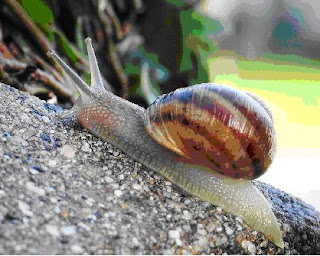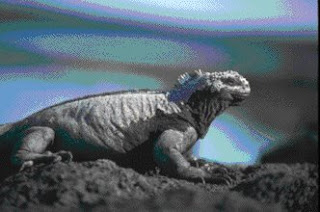For example in this case we are taking a pangolin as an animal that can protect itself from danger. A pangolin will roll up into a ball like shape to protect itself as its behaviour besides its has a hard scales as its special characteristics to protect itself. Animals have different physical characteristics that protect themselves from their enemies. These include:
a) a hard shell
b) thick skin
c) dry, hard scales
d) horns
e) spines
f) sharp claws
g) body shape or colour that matches the surroundings
h) good eyesight and hearing
Porcupines, porcupine fish and starfish have spines on the surface of their body. The spines can injure enemies that go near or attack these animals.
a) Porcupines raise their long, stiff spines as a warning when their enemies go near them.
b) A porcupine fish can inflate its body by drinking a lot of water. This raises the sharp spines on the fish’s body. The spines help to keep the fish’s enemies away.
a) Leaf insects have green body parts that look like leaves.
b) Sticks insects have along, thin body that look like a stick or twig. Their body colour is also similar to the colour of twigs.
c) Zebras have black and white stripes on their bodies. This makes it more difficult for their enemies to spot them from a distance.
a) Centipedes and cobras can bite their enemies to weaken or kill them.
Besides physical characteristics, some animals also behave in special ways to protect themselves from enemies. These include:
a) changing the colour of fur or skin
b) living in groups
c) pretending to be dead
d) breaking off a body part
f) running or flying away
g) hiding
For example, the artic fox can change the colour of its fur to match the colour of its surrounding. In spring and summer, the artic fox has grey fur. Before the start of autumn and winter, its fur will change to white. By changing the colour of its fur, the artic fox can avoid being detected by its enemies easily.
Chameleon can change their skin colour to match the colour of their surroundings, for example, the colour a tree trunk. This ability helps chameleons to hide from their enemies.

A millipede curls up its body and pretends to be dead
Elephants, deer, buffaloes and zebras live and move from place to place in groups (herds). This allows them to defend themselves together when they are in danger. For example, when predator tries to attack the young of the elephants, the adult elephants will form a circle and keep their young in the centre of the circle.
Besides, animals on earth live in many different habitats. Some of these habitats may be very hot or very cold. Animals that live in very hot habitats include camels and hippopotamuses. Animals that live in very cold habitats include whales and polar bears. Such animals have to adapt to the extreme weather in order to survive.
The animals have special characteristics to protect them from extreme weather. These include:
a) thick layer of fat under the skin
b) thick fur
c) wrinkled skin
d) food and water stored in the form of body fat
Some animals have special behavior that helps them to adapt to very hot or cold weather conditions. These include:
a) wallowing in mud or water
b) migrating to a new habitat
c) hibernating
Swallows and white storks adapt to changes in the seasons by migrating to new habitats. These birds migrate to warmer regions before when the place that they are living in starts to experience winter. During winter, the habitats of these birds will be very cold. It is also very difficult for these birds to find food or water during winter. By migrating to warmer regions, these birds avoid dying of cold or hunger.
Some animals such as zebras have to protect themselves against both their enemies and extreme weather. Some large animals such as elephants do not have natural enemies. However, they still have to protect themselves from their hot weather in their habitat to stay alive. During a drought, they have to move to new habitats to find water and food.











9 comments:
Exactly what I needed!!!
A blessing is a circle of light drawn around a person to protect, heal and strengthen. See the link below for more info.
#protect
www.ufgop.org
Very useful..A million thanks.God bless!
-Braveheart-
thank so much! it really help my speech!
?I was more than happy to find this net-site.I wished to thanks for your time for this wonderful learn!! I definitely enjoying every little little bit of it and I've you bookmarked to take a look at new stuff you weblog post. real money casino
it's a nice lesson,i have learnt something i didnt know. Thanks!
for dog owners I can highly recommend that they start using the dog clicker app on their phones so that the dog understands them better
I have been using this app KLWP Live Wallpaper Maker Mod Apk : and downloaded and gambling it frequently.
Hotels near Casino Queen Casino and Gondola, Ontario
Hotels 1 - 12 충청북도 출장마사지 of 64 — Find 당진 출장샵 hotels near 문경 출장마사지 Casino Queen Casino and 경상북도 출장마사지 Gondola from Mapyro. Browse 13 수원 출장마사지 hotels within a 30 minute walk.
Post a Comment